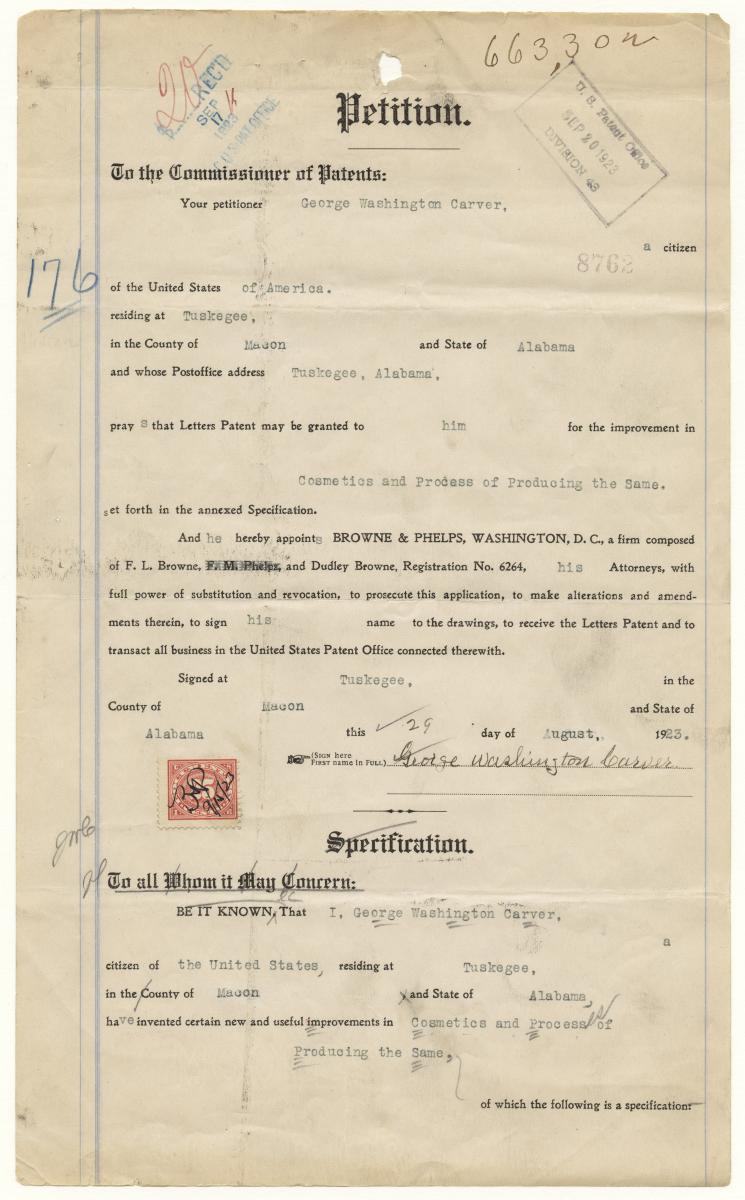
George Washington Carver Patent for Cosmetics
Dr. George Washington Carver, known for his work with peanuts, was a prolific African American inventor and scientist in the early twentieth century. Carver filed three patents with the federal government, and not one of them was for peanut butter. This patent is for creating a cosmetic vanishing cream made from peanuts, demonstrating one of the over 300 uses Carver discovered for the legume. Other inventions that were registered through the Patent Office were patents involving the manufacture and production of paint and stains from natural clay.
While the actual patents assigned to George Washington Carver were not commercially successful, Carver made historic advances and contributions to the agricultural field. Born into slavery towards the end of the Civil War, George Washington Carver grew up in Missouri, attended Iowa State University in Ames, earning a Master of Science degree in 1896. He was the first African American to earn an advanced degree in the field of agriculture.
In his work, Carver aimed to work on practical solutions for the modern-day farmer, and wished to find a crop that could replace cotton as the dominant crop in the South, leading to his work with common crops such as peanuts, sweet potatoes, and soybeans. Carver was recruited by Booker T. Washington to be the head of the agricultural department at the Tuskegee Institute in 1896. He would spend the rest of his life teaching, researching, inventing, and painting there until his death in 1943.
View and download the George Washington Carver patents (Patent Nos. 1,522,176; 1,541,478; and 1,632,365) in the National Archives Catalog. You can explore more records held in the National Archives at College Park through the National Archives Catalog or by visiting our research room in person. These records are located in Record Group 241: Records of the Patent and Trademark Office, Series: Selected Patent Files, 1840–2005.
